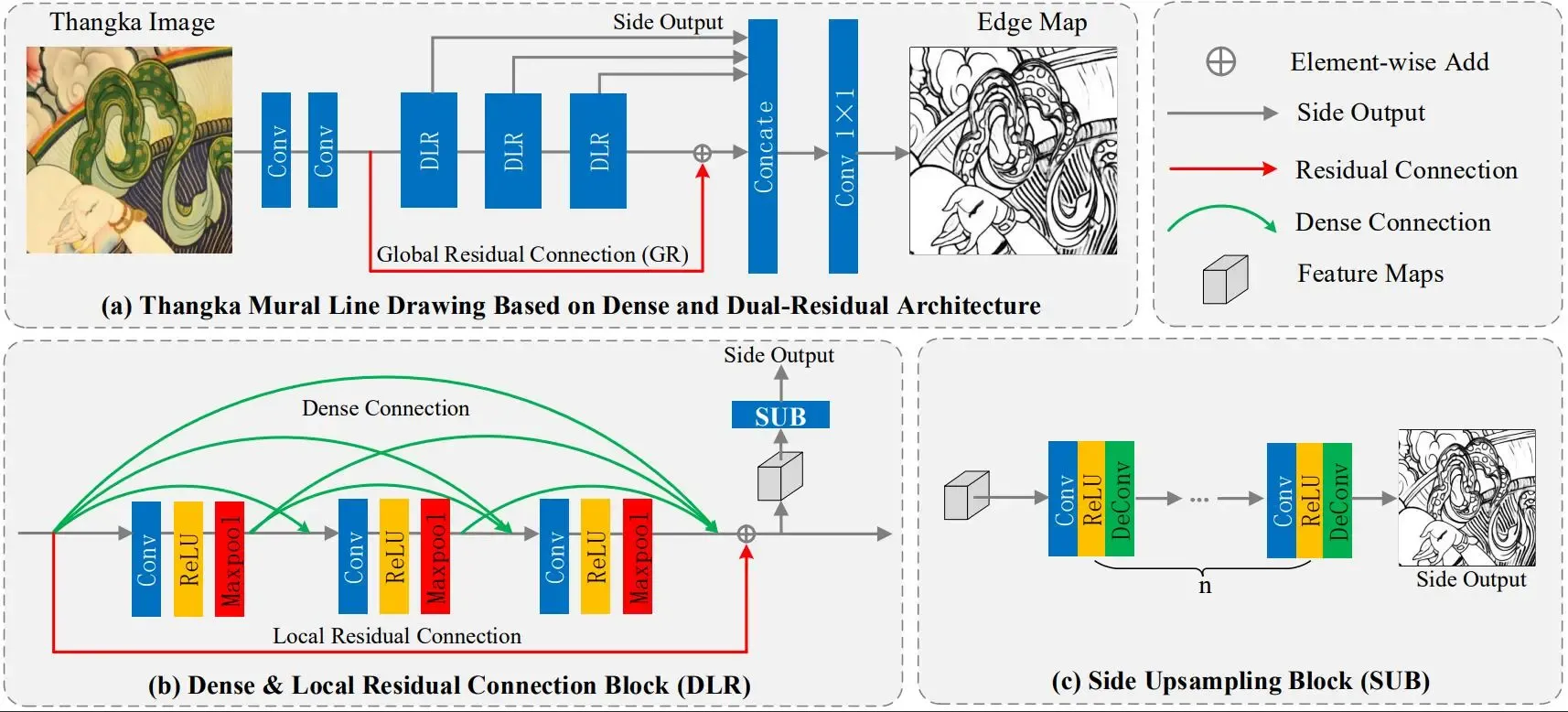Thangka Mural Line Drawing Based on Dense and Dual-Residual Architecture
Author(s):N. Wang, W. Wang and W. Hu
Published In:Pattern Recognition and Computer Vision. PRCV 2022. Lecture Notes in Computer Science, vol 13534. Springer, Cham.
Cite:Wang, N., Wang, W., Hu, W. (2022). Thangka Mural Line Drawing Based on Dense and Dual-Residual Architecture. In: Yu, S., et al. Pattern Recognition and Computer Vision. PRCV 2022. Lecture Notes in Computer Science, vol 13534. Springer, Cham. https://doi.org/10.1007/978-3-031-18907-4_12
Thangka murals are precious cultural heritage for Tibetan history, literature, and art. Digital line drawing of Thangka murals plays a vital role as a fundamental digital resource for Thangka protection. Digital Thangka line drawing can be categorized as image edge detection to extract visually salient edges from images. Although existing edge detection methods have progressed, they failed to generate semantically plausible edges, especially in-object edges. We propose a novel deep supervised edge detection solution to generate line drawings of Thangka mural images. Compared to existing studies, firstly a new Dense and Dual-Residual architecture (DDR) is proposed to propagate correct edge features effectively in CNN layers by using both short-range and long-range feature memory; Secondly, a new 2-phase loss function strategy is designed to focus on in-object edge detection. Experiments on different datasets (BIPED and Thangka) show that the proposed method is able to produce more richer edge maps comparing to the existing methods.
